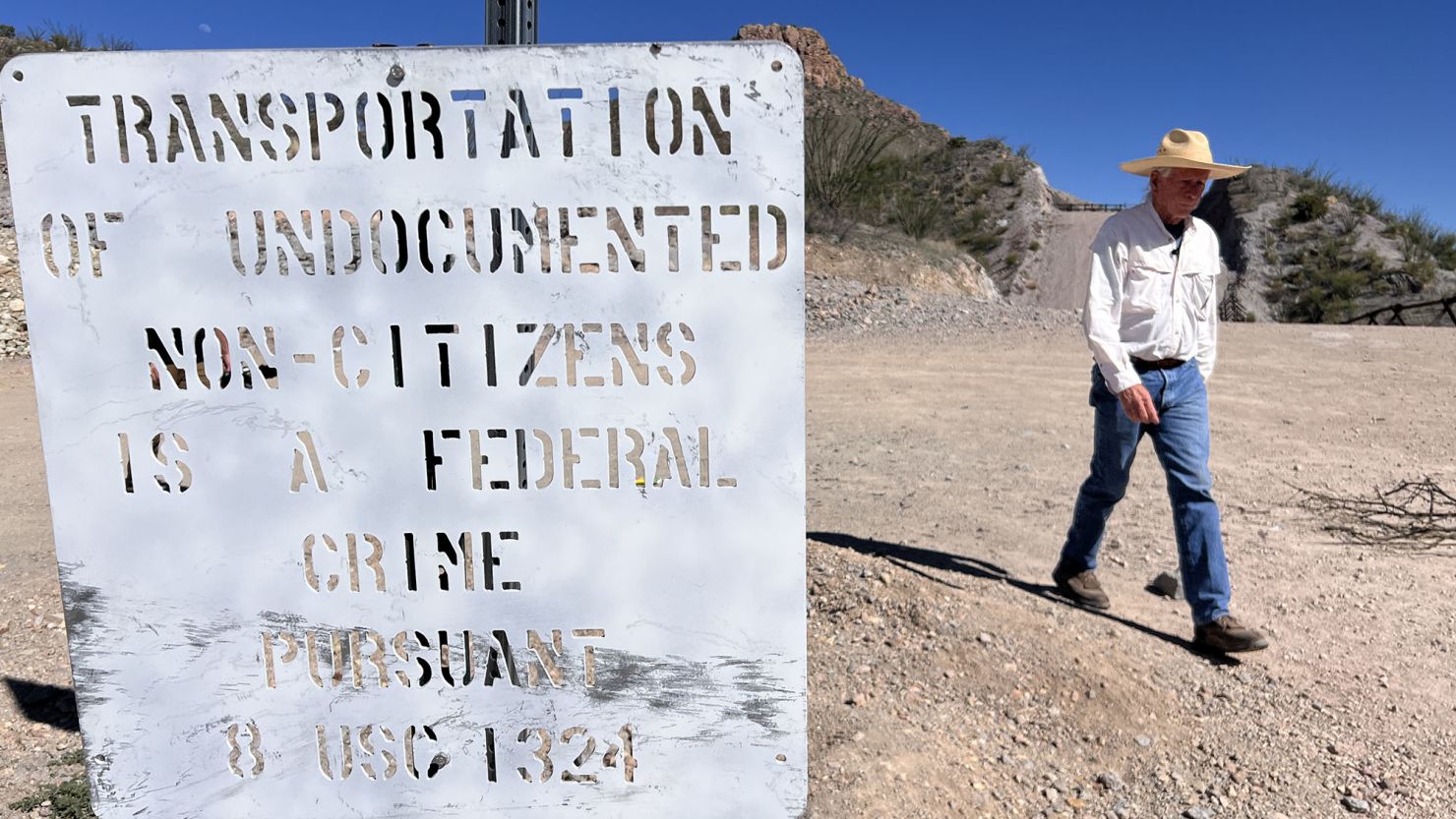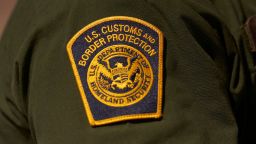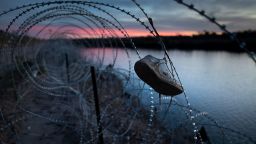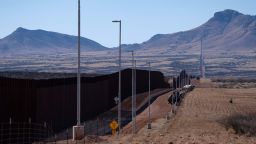Paul Nixon’s brain wrestled with his heart as he saw a pregnant migrant woman huddled with her husband on a dirt road near a gap in the border wall surrounded by the desolate desert hills of southeast Arizona.
It was a chilly midafternoon as the young Mexican couple waited to surrender to US Border Patrol agents – and Nixon thought it unlikely any agents would be on the remote road for hours.
But the risks involved in offering help raced through his mind. Driving the couple to safety would be a federal crime, and his volunteer group had been warned by agents that arrest and seizure of their vehicles were potential consequences.
In the end, rescuing a vulnerable, expectant mother outweighed everything else.
“The idea of leaving her out along the wall was just impossible,” Nixon, told CNN. He feared the woman could go into labor at any moment.
He helped the parents-to-be into a four-wheel-drive vehicle and headed to a makeshift migrant camp several miles away – where migrants can find water and snacks while they wait for the Border Patrol agents to transport them for immigration processing.
Nixon and his wife Laurel Grindy, two retired teachers in their 70s, belong to a group called the Green Valley–Sahuarita Samaritans, that helps migrants in distress in what is currently the busiest migrant crossing on the US southern border which – perhaps surprisingly to some – is in Arizona, not Texas.

Federal agents in the Tucson Border Patrol Sector have apprehended about 300,000 migrants from October to February, according to Customs and Border Protection data.
That’s about 64% more than the number of migrant apprehensions in the Del Rio Border Patrol Sector, which includes Eagle Pass, Texas – the epicenter of the ongoing battle over border security between Texas and the Biden administration.
At the current pace, migrant apprehensions in southern Arizona could reach 800,000 this fiscal year, John Modlin, the head of the Border Patrol’s Tucson Sector, told CNN. Modlin’s staggering projection nears the total number of migrant encounters in the sector for the past three fiscal years combined.
On a recent visit by CNN to this migrant crossing hotspot, just about everyone we encountered had been impacted by the steady flow of people crossing into remote areas of mountainous desert – and struggled to live up to their personal and professional ideals of service, compassion and duty.
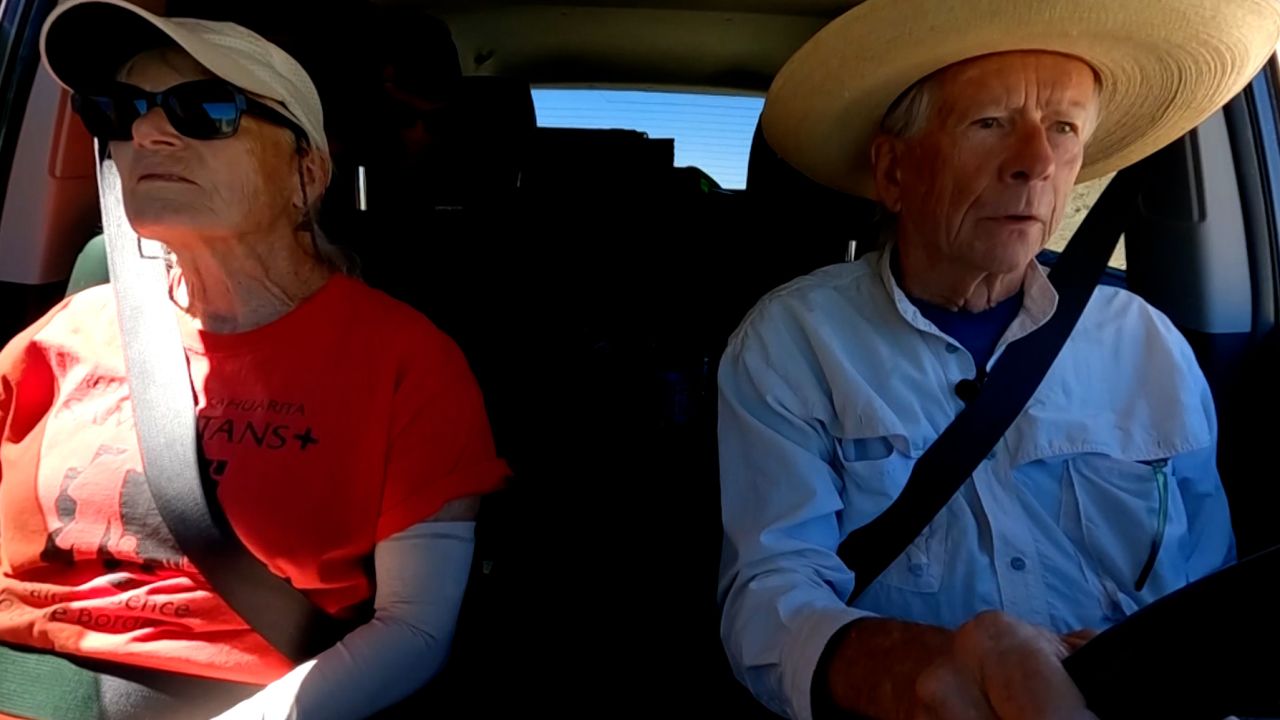
‘We’re not smuggling anybody’
We tagged along with Nixon and Grindy as they drove up and down the same steep road where they had found the pregnant Mexican woman more than a month prior. Their SUV was packed with water, apples, oranges, string cheese and boiled eggs.
Eggs are a popular treat for migrants who haven’t had a real meal in days, Grindy said.
The first stop was the makeshift migrant camp where Border Patrol agents picked up the Mexican couple hours after Nixon had made the risky, split-second decision to transport them to a safe location.
But as they turned into the camp, they noticed a sign posted by the entrance that read, “Transportation of undocumented non-citizens is a federal crime pursuant 8 USC 1324.”
It’s a crime, punishable with prison time, to knowingly transport or move a person who entered or is in the US illegally, according to the statute.
“We’re not smuggling anybody,” Nixon said. “We’re old people. We don’t want to spend our last days in jail.”
Nixon was thinking of the vulnerable women, children, and the infirm from all over the world he’s witnessed trekking the steep hills in flip-flops or inadequate shoes, he said.
The signs were posted by the Tucson Border Patrol Sector to remind the community the transportation of migrants is a felony under federal law, according to a CBP official. It’s Border Patrol’s way of urging volunteers who work in the area to leave the transportation of migrants to law enforcement, the official said.
Nixon now carries a letter, which he shared with CNN, from the volunteer group’s attorney stating he is not breaking the law by transporting vulnerable people and instead is saving lives and mitigating human suffering. It’s unclear if the document would have any legal standing. Nixon says the letter is a way to articulate to law enforcement that he believes his behavior is legal because he is aiding the vulnerable.
‘Our ranch could go up in flames’
With his hand on the steering wheel, Nixon pointed to the portion of the border wall in front of the camp and said volunteers called the area “Little Havana,” because groups of Cubans crossed at some point and the name stuck.

But the property where the camp is located is technically called “Tres Bellotas Ranch” and it’s owned by cattle rancher Lori Lindsay.
Lindsay is a descendant of Italian immigrants who sympathizes with migrants who have skirted the border wall and end up in the camp looking for respite.
On cold nights, when the temperature dips into the 20s, the plastic tarps and tents on her land are the only things protecting women and children from the ruthless elements.
But she worries about disease spreading because there are no restroom facilities or running water. And the nightmare scenario is even worse – that her generosity could cost her everything.
Migrants trying to keep warm started making fires in the camp, even under mesquite trees, and she fears a forest fire could spread – especially given an ongoing drought and dry desert conditions.
“It’s not just our ranch that could go up in flames, the whole Coronado (National) Forest could go up in flames,” Lindsay told CNN.
“This is our livelihood … Other people walk away. This is our home,” she said.
‘What keeps me up at night’
Lindsay’s cattle ranch and the border road traveled by volunteers like Nixon are all under the close eye of the Border Patrol, the federal law enforcement agency that’s tasked with detecting and preventing the illegal entry of people into the United States.
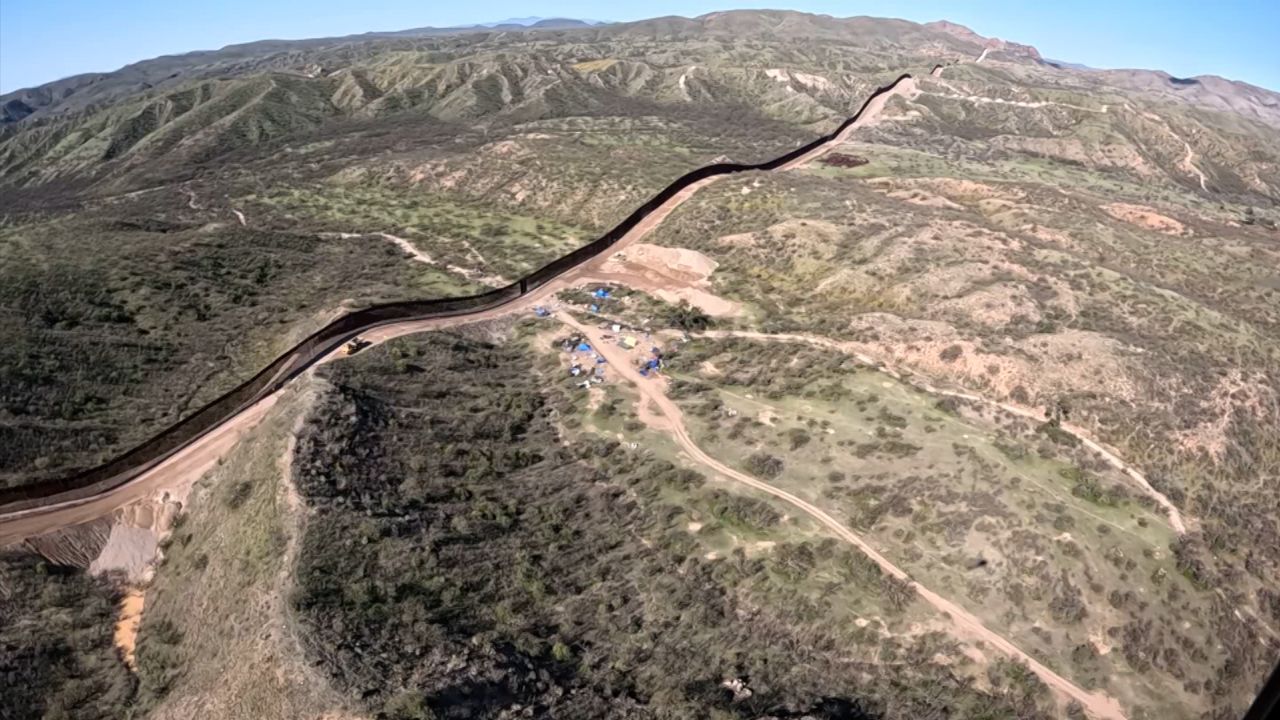
One day last week, we joined Brett Howard, a helicopter pilot and air interdiction agent with Air and Marine Operations – a branch of Customs and Border Protection – on a helicopter patrol of the border. He looked at the horizon and said in his 20 years with the agency he had interdicted migrants or drugs in every square mile as far as his eyes could see.
The jagged peaks, peppered with saguaro cacti, tower over deep valleys covered in bright yellow poppies. Several generations of border wall cut through the area – with older barriers blending in with the vegetation, and newer structures shooting up toward the sky like the spine of a giant beast resting on the steep mountains.
Smuggling organizations cross thousands of migrants in some of the most remote areas in the east side of Arizona, where Nixon and Grindy volunteer, all while these same groups smuggle narcotics and bad guys on the west side, according to Modlin, of the Tucson Border Patrol Sector.

The smuggler’s scheme bogs down Modlin’s agents on the east side, in what he calls a “humanitarian mission,” all while the team’s guard is down on the west side.
Since October, Modlin’s team has detected 30,000 “gottaways,” or individuals who have entered the country illegally but were not apprehended due to lack of personnel and resources, he said.
“That is absolutely what keeps me up at night,” Modlin said. He warns that “gottaways” could have criminal histories, be trafficking narcotics or have ill intent towards the United States.
Howard hovered around the giant peaks of the Baboquivari Mountains and pointed at the smuggling trails that curl around colossal rocks. From the air, the scene looks like a death sentence for anyone without the proper training and gear.
“The extent that migrants and smugglers will go … in order to not be detected, that’s what blows my mind,” Howard told CNN.



